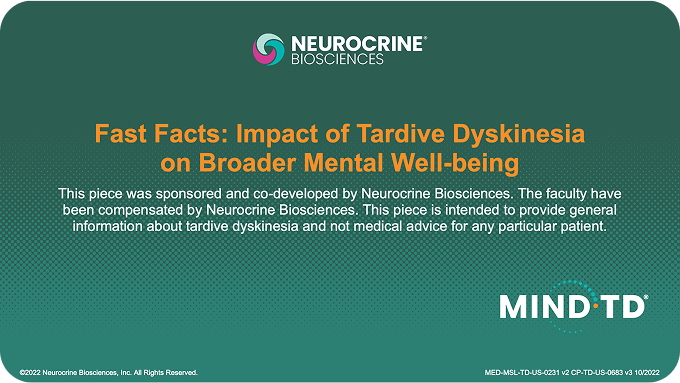

~2 mins
•Oct 2022
Impact of Tardive Dyskinesia on Broader Mental Well-Being
"'We Need to Look, We Need to Ask.' Spotting Tardive Dyskinesia in Practice" is a promotional educational program sponsored and co-developed by Neurocrine Biosciences and is not certified for continuing medical education. The speakers are presenting on behalf of and are paid consultants for Neurocrine Biosciences. The information presented is consistent with FDA guidelines.
References
Carbon M, Hsieh CH, Kane JM, Correll CU. Tardive dyskinesia prevalence in the period of second-generation antipsychotic use: a meta-analysis. J Clin Psychiatry. 2017;78(3):e264-e278.
Cloud LJ, Zutshi D, Factor SA. Tardive dyskinesia: therapeutic options for an increasingly common disorder. Neurotherapeutics. 2014;11(1):166-176.
Hansen TE, Brown WL, Weigel RM, Casey DE. Underrecognition of tardive dyskinesia and drug-induced parkinsonism by psychiatric residents. Gen Hosp Psychiatry. 1992;14(5):340-344.
Tarsy D. Curr Treat Options Neurol. 2000;2(3):205-214.
Caroff SN, Yeomans K, Lenderking WR, et al. RE-KINECT: a prospective study of the presence and healthcare burden of tardive dyskinesia in clinical practice settings. J Clin Psychopharmacol. 2020;40(3):259-268.